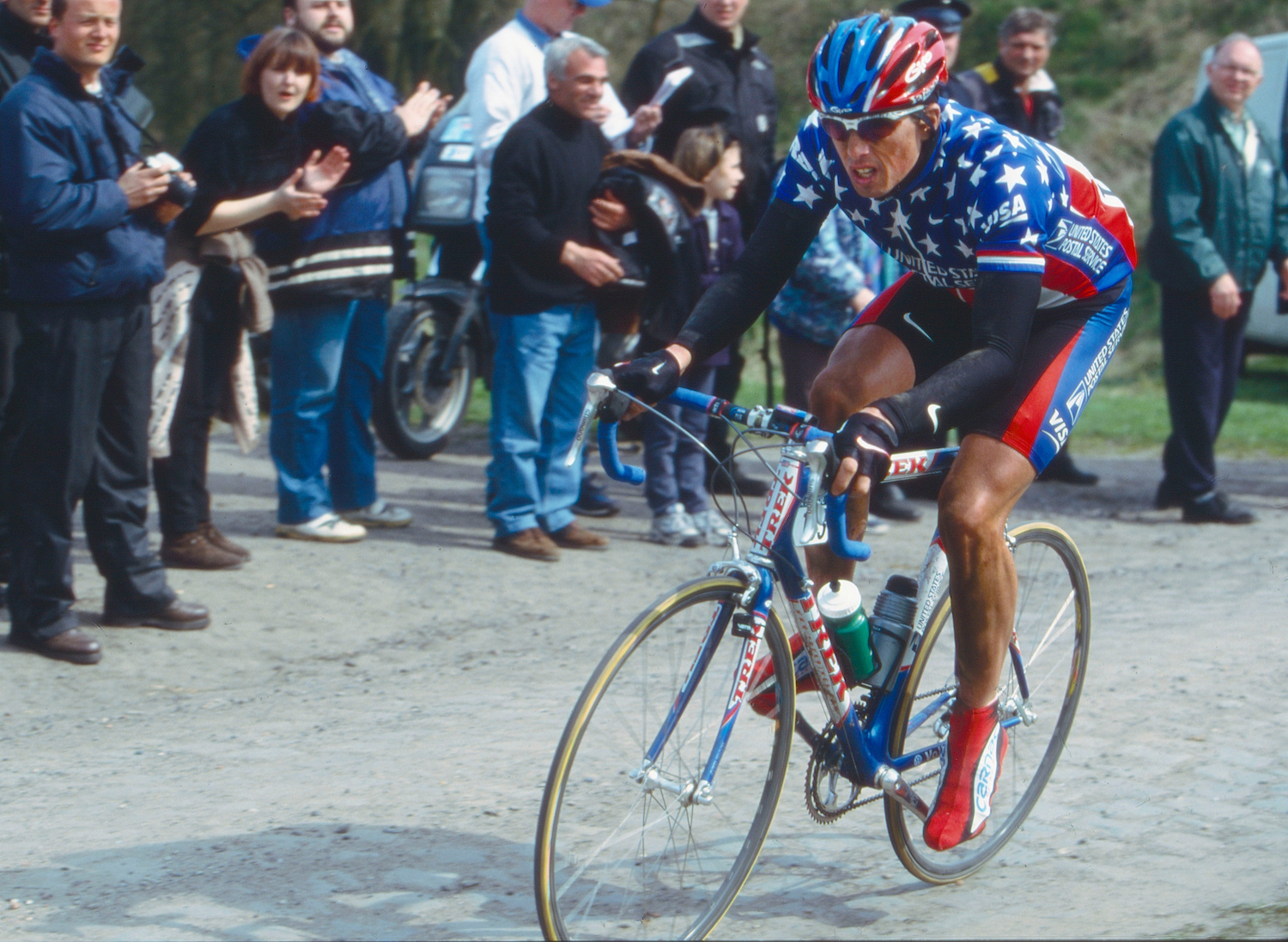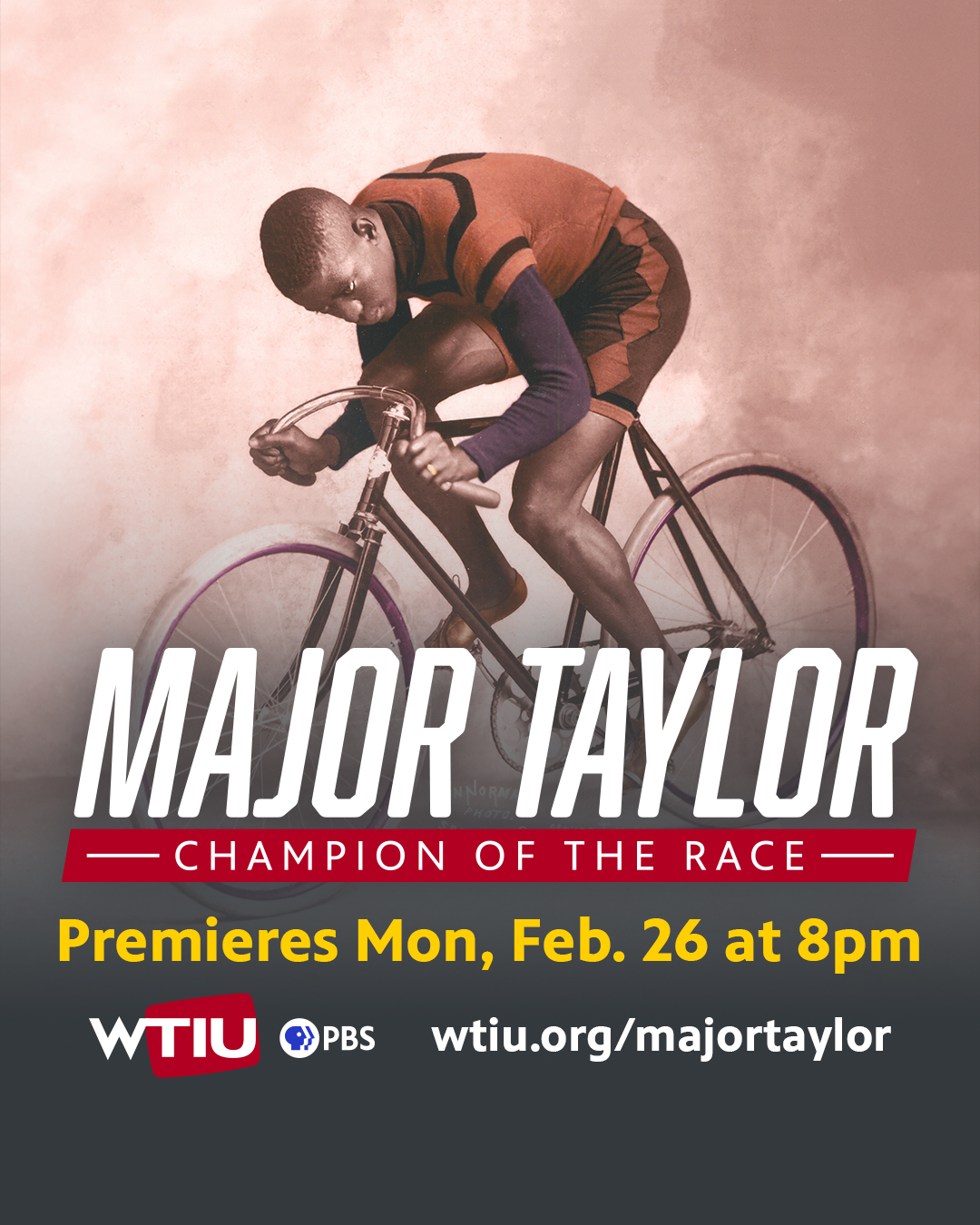What is Paris-Roubaix? This April will mark the 122nd running of the professional bicycle race known as “the Hell of the North” that seeks out every cobbled Napoleonic era cow path in Northern France before finishing…on a velodrome. Beautiful and historic? Torturous and soul crushing? The rider’s first “race” of the day is to get to the front for the worst cobbles of the race in the Arenberg Forest. This section comes after a long stretch of pavement but precedes dozens more sections of bone jarring stones. Then U.S. Postal rider Marty Jemison, who rode it, as most do, in a support role in 2000 for Frankie Andreu and George Hincapie offered some insight in a previous post in these pages.

“The Arenberg Forest is 2.7kms long and comes after 168kms. It is a very rough section…imagine crossing rough rail-road tracks for 2.7kms…. shaken silly. Six of us entered together, three exited together. When I stood on the pedals, my legs were jelly, vibrated into mush, as slowly I regained speed, but I was now alone. I recovered a bit, ate and drank. A select group was on its way up to me so I waited. Now on the radio, George was talking to me…. “Get ready to ride on the front”. Frankie and Eki (Viatcheslav Ekimov) were there with George in the wheel, and they were leading the group. The team was riding well!! When they caught me, I rode on the front, at a very stiff tempo to set up for the next section of pavé. I continued this solo effort for the next five kilometers. Frankie knew the sharp turns and coached form behind. I did take one turn too fast, and Frankie led the team past me. I then tried to move back up, but the pavé was too near. When the group entered, with fresher legs, they simply rode away and my role in the race was coming to an end. Now I rode as hard as possible, looking for a teammate who may have had a flat. When they were far up the road, I knew my race was over. The director’s car passed, and they told me the second feed was not far, indicating to stop there. I had done my job.”
Paris Roubaix was first run in 1896, but it was not until 1978 that an American raced across the cobblestones in “The Queen of the Classics”. That rider was Jonathan Boyer, who would also become the first American to race in the Tour de France (1981), but he did not finish on his first attempt. Few do! He did, however, make it to the velodrome in his second attempt in 1981, becoming the first American to finish the grueling event (55th) while supporting his team leader and reigning World Champion Bernard Hinault to victory. He was joined by young Greg Lemond, just nineteen years old, who failed to finish but was active at the front leading his French teammate into the early cobbled sections.
Lemond would miss the 1982 edition when he broke his collarbone in Ghent-Wevelgem but Boyer, now on Sean Kelly’s Sem-France Loire-Campagnolo squad, finished a very respectable 18th and was joined on his team by another American pioneer, John Eustice, who unfortunately failed to finish. Lemond raced again in 1983 and 1984, failing to finish in both attempts. Especially in wet years it is not uncommon for three-fourths of the field to abandon this monument. Boyer was back in 1984 with the Italian team Supermercati Brianzoli which included another American, John Patterson, but both failed to finish.
LeMond finally broke through in 1985 with a strong ride under the most difficult conditions. It had rained for days in Northern France and the cobbles were choked with heavy mud washing out of the fields while a strong head wind meant it took nearly seven and a half hours for winner Marc Madiot to complete the course. Only thirty-five of the nearly two hundred starters did, and Greg just missed the third step of the podium, pipped on the line by Sean Kelly in the chase group sprint. His historic fourth place would stand for nearly a decade and a half as the best American finish. He would also place ninth in the 1992 race, in support of his victorious French teammate Gilbert Duclos-Lasalle.
In 1986, the American 7-Eleven team began their annual participation in “The Hell of the North” and a record eight Americans took the start: Lemond and his young teammate Roy Knickman on La Vie Claire, and Chris Carmichael, Gavin Chilcott, Alexi Grewal, Ron Kiefel, Bob Roll, and Doug Shapiro for the Slurpees. Shapiro had ridden the race the year before with the Dutch Kwantum squad but failed to finish. Lemond rode at the front with the favorites for much of the day but an untimely puncture and an absence of support vehicles meant he trailed home in 30th. Bob Roll finished his debut in 55th place, the only finisher from his team and only the third American to finish Paris-Roubaix. Many 7-Eleven riders contested the event in the coming years, but few made it to Roubaix with Roll proving their most reliable: 48th (1987), 25th (1988), 37th (1989), 61st (1990), with his final appearance a DNF with Motorola in 1991. Their most unlikely finisher was the spindly climber and future Giro d’Italia winner Andy Hampsten who showed his versatility earning 50th in 1987.
By the mid-90s Americans were doing much better. A stalwart on both the Motorola and US Postal teams, Frankie Andreu started every year between 1990 and 2000 with a best finish of ninth in 1994. Of those eleven consecutive starts, he made it to the finish nine times, albeit outside the time limit in 1998. He gave American cycling fans a thrill when he went clear with 50 kilometers to go alongside Johan Museeuw in 2000 but was unfortunately dropped by the rampaging Lion of Flanders who went on to win his second of three cobbled trophies while Andreu faded to 20th.
It was during these years that America’s greatest ever Roubaix rider would emerge. George Hincapie started the race 17 times, which ties him for the all-time most starts in the event alongside Frederic Guesdon, Imanol Erviti, and Matthew Hayman. Hincapie rode it in only his first year as a professional, 1994, finishing 31st and he loved it. He improved to 21st in 1995 but equaled Lemond’s fourth place in 1999 behind a Mapei clean sweep while wearing the stars and stripes of US National Champion. He followed that up with sixth in 2000 in the second group behind winner Museeuw and was fourth again in 2001 behind a Domo team clean sweep. In 2002, he suffered an exhausted crash into a ditch when chasing with young teammate Boonen, who carried on to a fine third on his debut and was dubbed Museeuw’s heir apparent with George again sixth. George missed 2003 with illness and was eighth in 2004. In 2005 he made the winning break but lost to Boonen in a three-up sprint. This second-place finish is not only still the best American finish to date but the only time an American has finished on the podium. He finished the race a staggering sixteen times, with his only DNF coming in 2006 when in the lead group of eight with two teammates, it seemed to be his year…until his fork steerer broke and he crashed heavily. What an incredible run!
In 2008, George scored his last top ten (9th), and a new American classics hope emerged. Sprinter Tyler Farrar would start nine times from 2008 to 2017, finishing eight but despite success in other classics, his best result was 29th in 2012. Hincapie’s last finish came in 2012 when he supported his young up and coming teammate Taylor Phinney to 15th. Phinney had twice won the Espoir edition of Paris-Roubaix and would become the new American hope, ultimately peaking at 8th in 2018, about two and a half minutes down on Peter Sagan. Sadly, no American has been in the first thirty since. In fact, we had no one in the race for the next few years and in 2022 and 2023 Magnus Sheffield alone flew the flag. Hopefully in a positive sign for the future, three Americans raced last year: Andrew August, Joey Rosskopf, and Riley Sheehan…and all three finished. In all just sixty-four Americans have started the “Queen of the Classics”. And in 121 editions of Paris-Roubaix, only thirty Americans have earned the honor of finishing the race. But what an honor!!!








